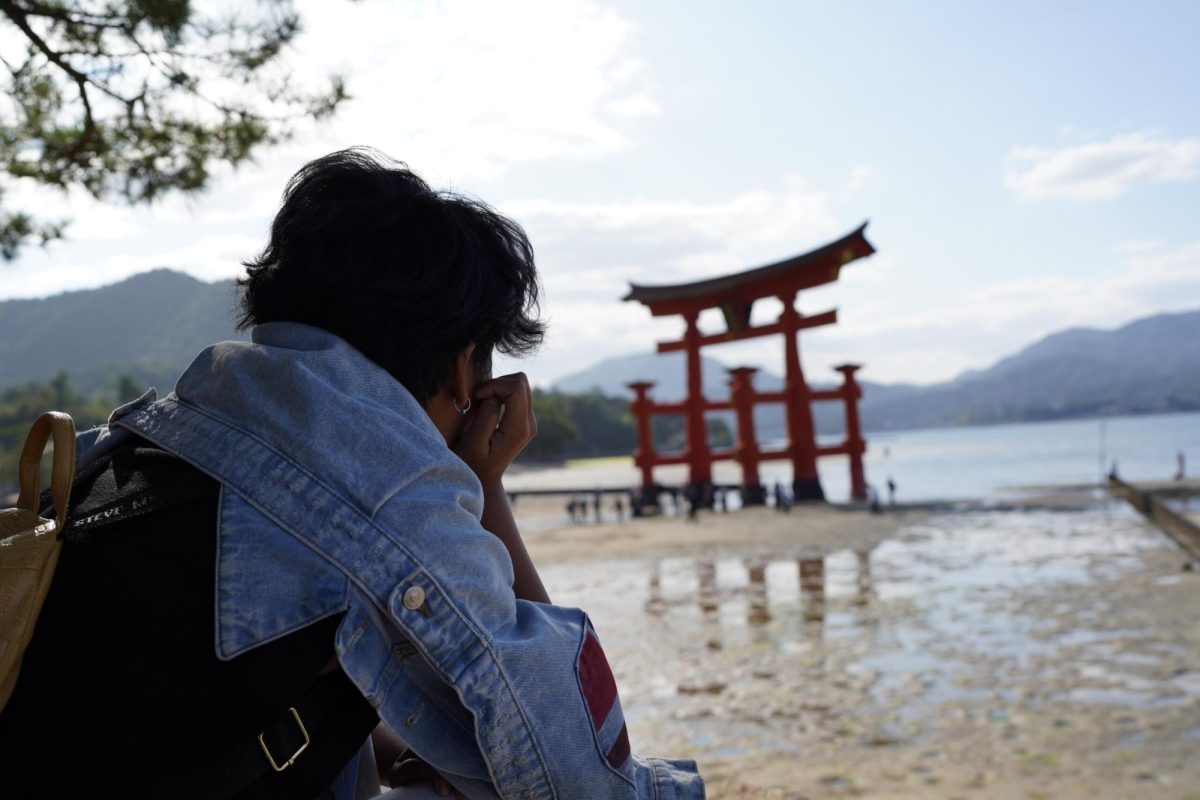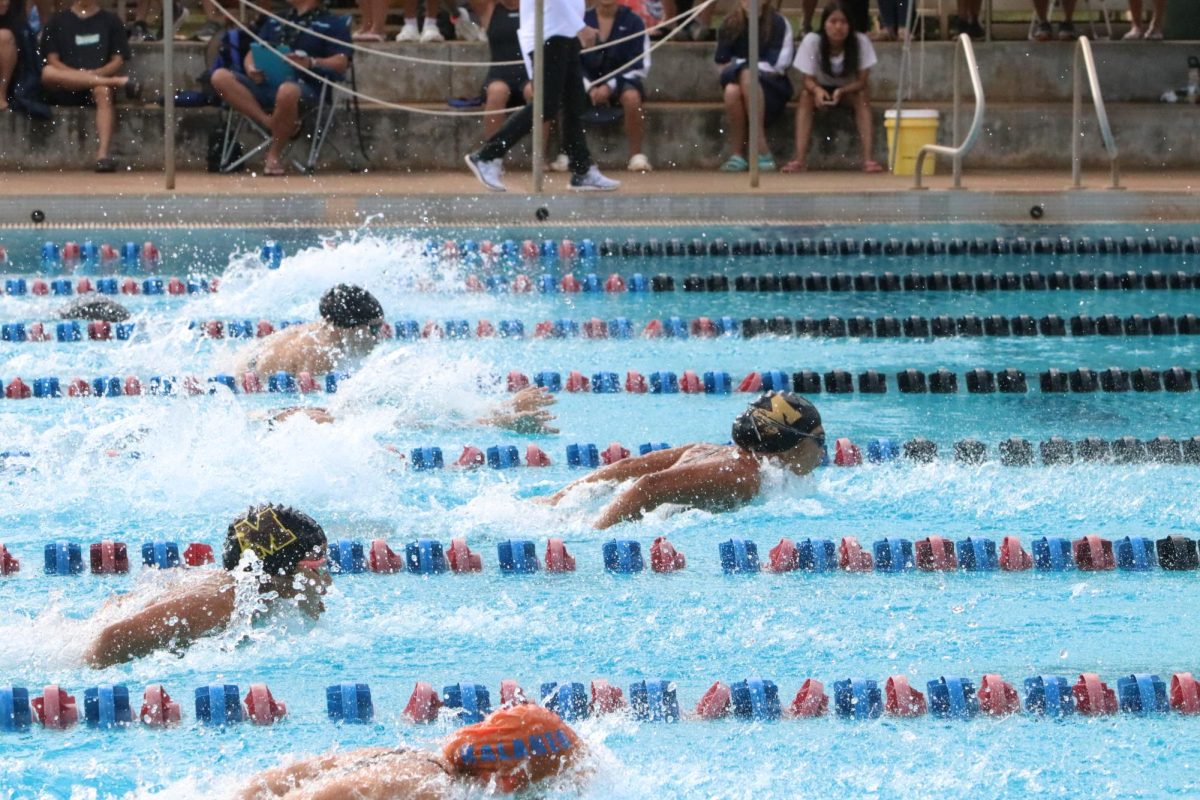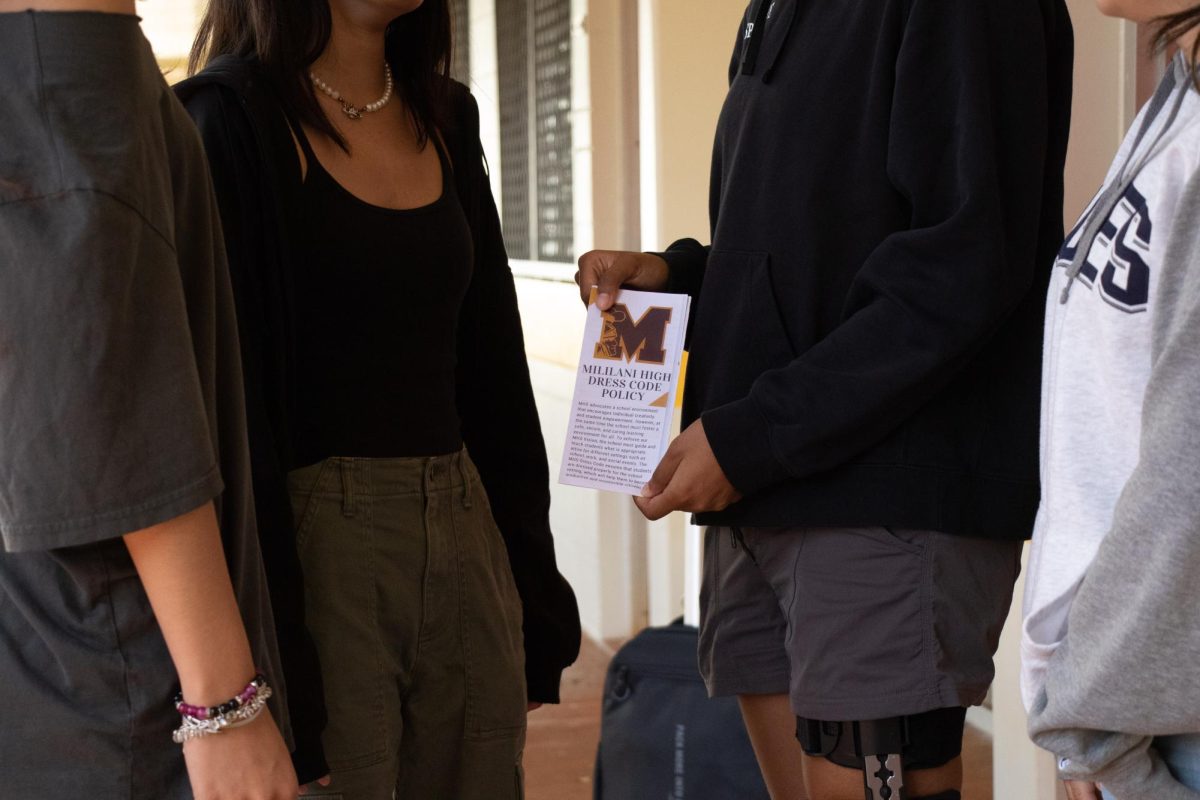Boehning Memorializes Korean War Soldiers at Punchbowl Cemetery
January 17, 2019
On Nov. 14, social studies teacher and National History Day coordinator Amy Boehning took a group of 33 students to the National Memorial Cemetery of the Pacific (Punchbowl Cemetery) to learn about some of the soldiers of the Korean War that are buried there. These students were the first to try an activity put together by Boehning as a part of a program memorializing soldiers from the Korean War.
“The Korean War is not something that’s really covered in class — they’re supposed to learn about it in U.S. History and World History and, just like history, everybody skips over it. The Korean War still impacts us today — the Armistice was never signed by South Korea. A lot of military family members, their parents serve in South Korea. We have the nuclear issues there today and a lot of people don’t understand what the tension or the history is with Korea and why there is a problem and it all goes back to the Korean War. For us to understand issues today, they need to learn about the history of the Korean War and I think that will help them make better decisions about that region of the world and also, there is a big possibility that a lot of my students joining the military will end up serving in South Korea from something that happened way back then,” said Boehning.
As a part of the Veterans Legacy Program, Boehning spent months researching a soldier that died in the Korean War and a deceased veteran of the Korean War. The program was designed to remember some of those that had fought in the Korean War. “The field trip was a culmination activity for something I’ve been a part of since January. It’s a program through National History Day and the National Veterans Administration. They put together a program where teachers were contracted, nine teachers were contracted from across the country, to memorialize Korean War veterans and soldiers — heroes — buried in our state,” said Boehning.
Prior to creating their activity, the teachers were flown out to O’ahu where they engaged in activities for a week. Towards the end of their stay here, the teachers went to Punchbowl Cemetery and read the eulogies that they had written at the graves of the soldier they had researched. “It’s really (about) giving the history and the family history back to their families and, at the same time, remembering those who are buried at Punchbowl. A lot of the people go to the cemetery thinking about World War II and they don’t even think about Korea or Vietnam. It was really a fulfilling project,” said Boehning.
This field trip is meant to spread awareness about the Korean War. It’s goal being to commemorate some of the soldiers that had served or died in the war and use their experiences to teach visitors about the Korean War. “The Korean War was called the ‘Forgotten War’ before the war even ended. A lot of people celebrated the soldiers from World War II, but there’s little discussion about the soldiers from the Korean War. Hawai’i lost more soldiers per capita, than any other state in the country. A lot of families have connections to the Korean War that they don’t even know about. I think a lot of families don’t have this information and it’s really important to remember the sacrifices that these men committed,” said Boehning. Junior Mia Anzai added, “The research on the veterans and soldiers who died during the Korean War was important because each individual have a different perspective of the war so their stories and emotions is like a gateway of what it was like being in the Korean War.”
Punchbowl Cemetery is America’s overseas burial place, serving as the burial place for thousands of soldiers from across the U.S.. There are over 1,000 unknown soldiers buried at Punchbowl Cemetery, with over 800 of them from the Korean War. “Something shocking I learned was that there were other soldiers who were missing information about them so, they were known as the unknown,” said Anzai. Librarian Betty Arai added, “It was surprising to learn that so many of the soldiers have been forgotten. I learned that a lot of the soldiers who were born and raised on the mainland and had served in the Korean War, their remains were sent here, to be interned in Punchbowl, and so because of that a lot of their families didn’t even have the opportunity to visit.”
With the help of the National Memorial Cemetery of the Pacific staff and the Public Affairs Office, Boehning’s activity will be offered to schools across Hawai’i, as well as any other visitors to the cemetery. Boehning’s research, eulogy and activity, as well as those of the other eight teachers, will be released to the public and published online at the end of this month.



